Contents
- Crop Cultivation
- Agricultural Communities
- Types of Farming
- Jowar (Jondhala or Jvari)
- Bajri
- Wheat
- Rice
- Maize
- Traditional Agricultural Practices
- Mot Irrigation
- Green Manuring
- Use of Technology
- Switch to non-traditional crops
- Changes in Irrigation and Scientific farming techniques
- Institutional Infrastructure
- Rajarshi Chhatrapati Shahu Maharaj College of Agri-Business Management
- Market Structure: APMCs
- List of APMC markets(as of September 2024)
- Problems Faced by Farmers
- Flooding
- Drought
- Graphs
- Irrigation
- A. No. of Projects
- B. No. of Ponds/Vilage Lakes and Storage Dams
- C. Irrigation Beneficiary Area vs Irrigated Area
- D. Share of Beneficiary Area Irrigated
- E. Tubewells and Pumps Installed In The Year
- F. Irrigation and Water Pumping Facilities
- Cropping Metrics
- A. Share in Total Holdings
- B. Cultivated Area (With Components)
- C. Gross Cropped Area (Irrigated + Unirrigated)
- D. Share of Cropped Area Irrigated
- E. Distribution of Chemical Fertilizers
- Land Use and Credit
- A. Area of Agricultural Land Holdings (With Size Group)
- B. Size Groups' Share in Total Agricultural Land Holdings Area
- C. No. of Agricultural Land Holdings (With Size Group)
- D. Size Groups' Share in Total No. of Agricultural Land Holdings
- E. Agricultural Lending
- F. Agricultural Credit as a share of Total Credit
- Sources
SANGLI
Agriculture
Last updated on 6 November 2025. Help us improve the information on this page by clicking on suggest edits or writing to us.
Sangli, located in the western region of Maharashtra, the region is also known as the “sugar-belt” of the state and is distinguished by its strong agrarian heritage and variety of agricultural practices. A significant section of the population works in farming and associated occupations, contributing to the district's primarily agrarian economy. The district has a hot semi-arid climate and lies in the Western plateau and hills region.
Crop Cultivation
The agricultural landscape of Sangli district is shaped by a variety of soil types, notably the yellow, red, and brown soils found predominantly in the western regions, particularly in Shirala taluka, and the fertile black soils found in the valleys of the Krishna, Warna, and Yerla rivers, especially in Miraj and Tasgaon talukas. These soils support a range of crops, with sorghum (jowar) standing as the principal cereal cultivated throughout the district. Sugarcane is also grown on a large scale in the Sangli district since the district lies in the sugarcane belt of the state.
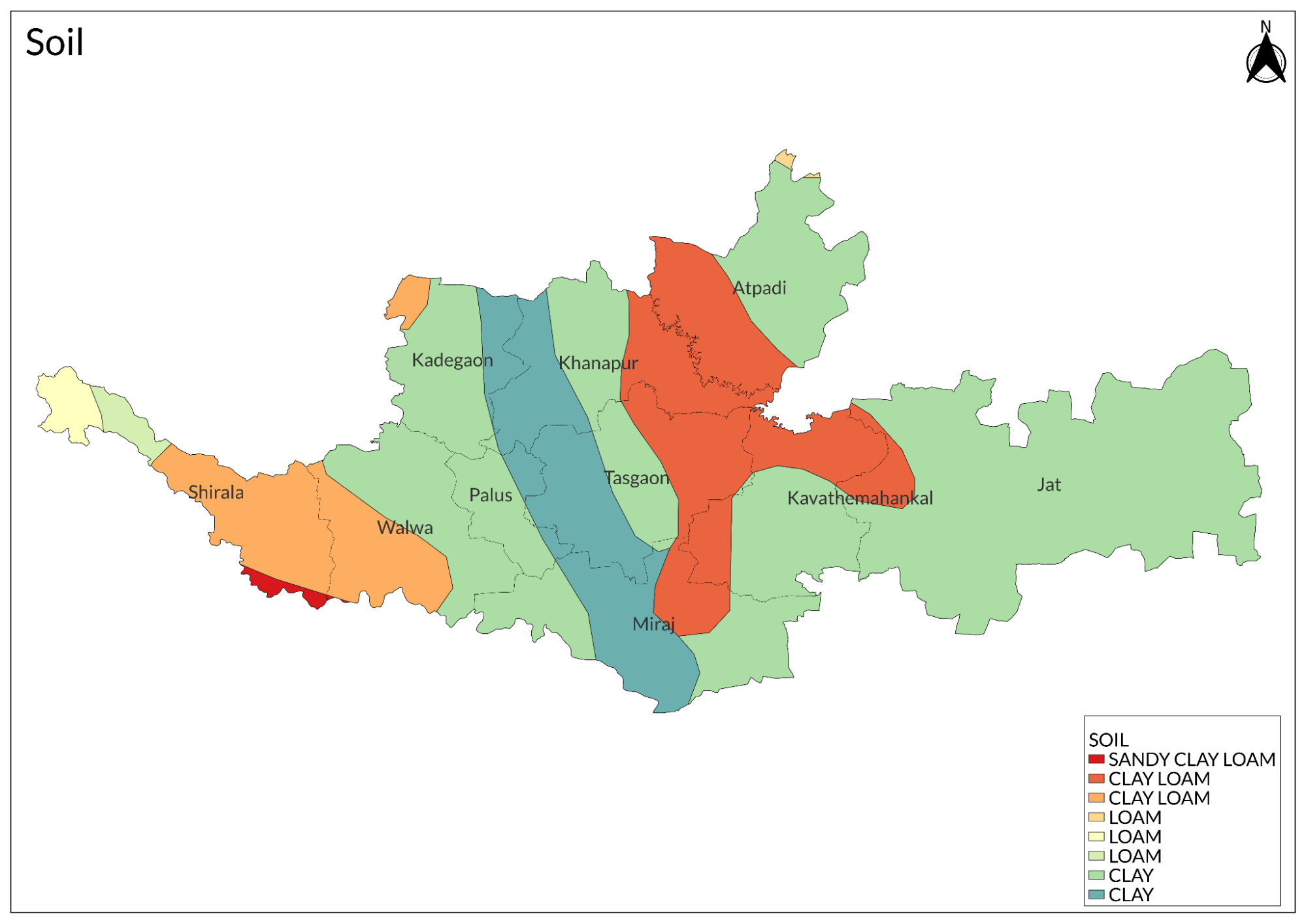
The city of Sangli in Maharashtra is known as the "Turmeric Capital of India", and the district itself is renowned for its turmeric production, helping India become one of the largest exporters of turmeric in the world. Sangli turmeric was granted a Geographical Indication (GI) tag in 2014 and is highly regarded for its vibrant and appealing saffron colour by spice manufacturers.
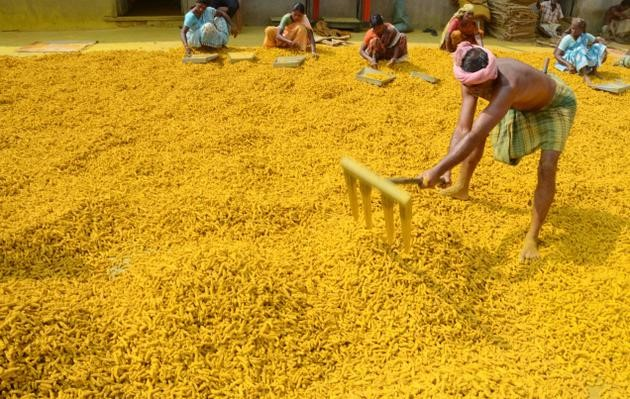
In addition to the Turmeric, Sangli raisins have also received a Geographical Indication (GI) tag in 2014 due to their consistent appearance, characterised by a perfectly golden-green or golden-yellow colour, smooth texture, and delicate look, along with their unique flavour. The Tasgaon and Miraj talukas, in particular, have emerged as leading producers of grapes, fostering the growth of grape-based industries. Sangli is the second-largest producer of grapes in Maharashtra.
Tobacco cultivation is another notable agricultural activity, particularly in the fertile basin of the Krishna River, encompassing parts of Miraj, Tasgaon, and Walwa talukas. The region also supports a diverse array of crops, including bajri, rice, wheat, maize, groundnut, soybean, cotton, and fruit crops such as pomegranate.
Crops such as Bajri, jowar, wheat, rice, and maize constitute the staple crops, while sugarcane, turmeric, grapes, and tobacco contribute significantly to the district’s economic output. The cultivation of groundnut, soybean, and cotton further adds to the agrarian richness of Sangli, making it a prominent agricultural region.
Agricultural Communities
The district Gazetteer (1969) talks about several communities in the region that have strong ties to agriculture. Maratha Kunbis and Kshatriya Marathas are communities that are generally involved in cultivation, though they can also be found in other walks of life. The Maratha community has been able to prosper due to the growth of the cooperative movement in the field of sugar and oil production among the Marathas. Other communities, such as the Malis, Vadars, Kaikadis, Ramosis, Bhangis, Mahars, Mangs, and Vanjaris, are all involved in agriculture to an extent. In addition to Hindu communities, Muslim groups also contribute to the agricultural economy.
Types of Farming
The farming methods used in the Sangli district showcase significant diversity, with each cereal crop cultivated using practices suited to the region's varying soil types, climatic conditions, and available resources.
Jowar (Jondhala or Jvari)
Jowar thrives best in deep, heavy black soil and is grown in both the kharif and rabi seasons. The land is ploughed and harrowed from February to May, followed by additional pulverising after the first showers in June. Sowing is typically done through a three-countersink drill or by the dibbling method, with good grain reserved as seed. Interculturing and hand-weeding are common practices. Kharif jowar matures by November-December, while rabi jowar is harvested in February-March. The crop is either cut close to the ground with a sickle or uprooted, with the stalks sun-dried and tied into bundles. Threshing is done using stone rollers, and the grain is separated from the chaff by winnowing.
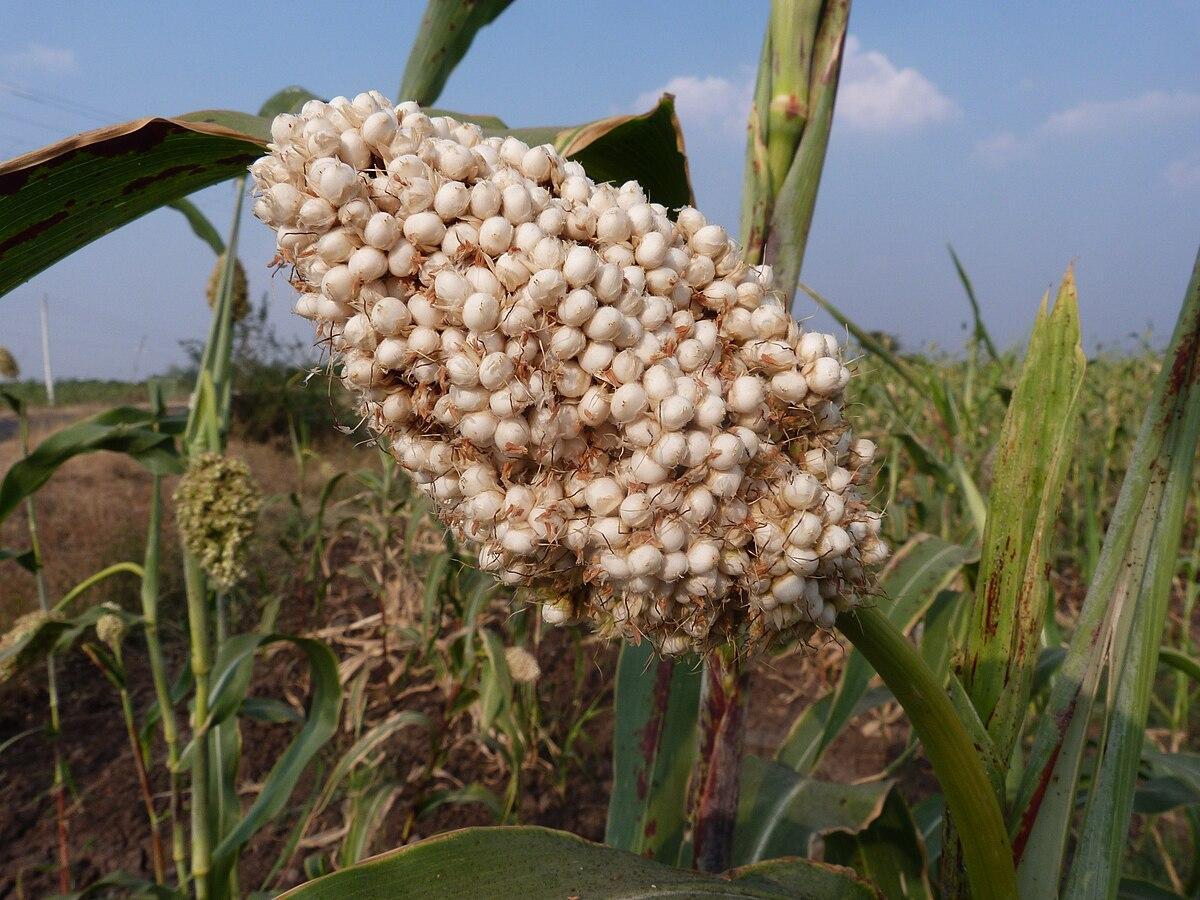
Bajri
Grown primarily as a Kharif crop, bajri requires light to medium soil types and rainfall between 254 to 1016 mm. The land is harrowed in May-June, and the seed is drilled between late June and mid-July, often mixed with pulses. Harvest occurs in late October, with the crop cut close to the ground. The remaining operations, such as threshing and winnowing, follow the same procedures as jowar.
Wheat
Wheat grows well in black soils with dry and cold weather. The land is ploughed and harrowed, with manure applied before sowing. Irrigation is crucial, provided at 15-day intervals. Sowing occurs in October-November, and harvesting takes place in February-March. The wheat plants are cut and sun-dried, with threshing done manually by beating the bundles.
Rice
Rice is cultivated on laterite or medium black soils, requiring warm, moist climates and over 40 inches of rainfall. The land is bounded to retain water, and a 'rabbed' plot is prepared by burning layers of leaves, grass, and branches before sowing seeds after the first monsoon showers. Seedlings are transplanted in rows, and manures are applied in two doses. The crop matures in three to five months and is harvested by cutting close to the ground, with threshing done by beating the bundles on logs or stones.
Maize
Maize thrives in well-drained, deep alluvial soils, requiring rainfall between 508 and 762 mm. The land is prepared in February-May, and seeds are sown after the first monsoon showers. The crop grows quickly, maturing within 3-4 months. It is harvested from September to October or in May, depending on the season.
Traditional Agricultural Practices
The farmers of Sabgli have various traditional practices that have been carried out for generations. These include the usage of traditional implements, irrigation methods, etc.
Mot Irrigation
The sources of irrigation in the district are rivers, wells, tanks, etc. Water lifted from rivers, wells, tanks, etc., is used for irrigation purposes. In the Mot system of irrigation, water is lifted by leather mots or iron mots. This system is still prevalent in some parts of the district where it is not possible to install electric pumping sets and where agriculturists cannot afford to purchase oil engines.
Green Manuring
Green manuring is practised by sowing the tag seeds in June and burying their vegetative growth in the field, using a hoe. This adds nitrogen to the soil. Manure is also prepared in the compost pits measuring 10' x 6' x 3'.
Use of Technology
Drone technology has emerged as an important development in modern farming, particularly for crops such as sugarcane. This method uses drones to spray fertilisers and pesticides across large areas with speed and precision. According to a Business Standard report (2021), compared to traditional spraying, which typically requires 4–5 hours per acre and about 200 litres of water, drones can complete the same work in just 5–10 minutes using only 10 litres of water. This efficiency results in significant time and cost savings, with farmers reporting up to a 40% reduction in expenses and an estimated 20–30% increase in yields.
The uniform application provided by drones helps ensure consistent crop health and productivity while reducing the overall use of chemicals by as much as 50%. Drones can also access crops of varying heights and adapt well to different climate conditions, making them a flexible option for farmers.
In districts such as Sangli, the growing use of drones has also created local employment opportunities. Young people are engaged in drone assembly, piloting, transport, and operations. As reported, drone spraying has covered over 3,200 acres in the region, benefiting around 2,000 farmers. In addition to spraying, future plans include using drones for crop scouting, pest and disease monitoring, soil analysis, and irrigation management, further advancing precision agriculture in Maharashtra.
Switch to non-traditional crops
Sangli is one of the most drought-prone areas in Maharashtra, but most of its agricultural products are water-intensive, for example, sugarcane. Several farmers have started to switch from the production of traditional crops like sugarcane, soybean, and grapes to the exotic dragon fruit.
Changes in Irrigation and Scientific farming techniques
Many farmers from rain-fed areas seasonally migrate to sugarcane-producing regions due to lower agricultural yields. This migration has severe consequences for their families, particularly children who are often forced to drop out of school. Women also face challenges, with some opting for hysterectomies to eliminate menstrual pain, enabling them to work continuously in the sugarcane fields without interruption. Now, however, several farmers in Madgyal village of the rain-fed Jat tehsil of Sangli district have replaced traditional farming irrigation with drip irrigation and newer techniques that have tried to stop these temporary migrations. For example, the farmers used this technique to produce bajra three times the national average. For seed germination, the farmers were given a wide variety of bajra seeds and were trained to check their germination rate so that the crops did not fail.
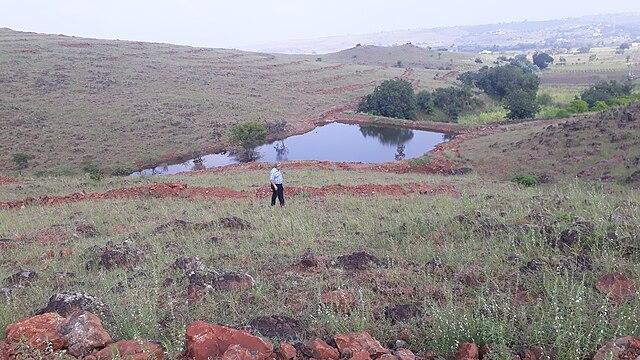
Earlier, the Mot system of irrigation, where water was lifted by leather mots or iron mots, was used. This system is now somewhat replaced by electric pumping sets and oil engines. In some places, farmers cannot afford these new electric pumping sets and oil engines. To help such farmers, a few cooperative lift irrigation societies have been set up. These societies enable the farmer members to pool their resources for the purchase of lift irrigation machinery to lift the water from rivers and wells in places where its normal course cannot be led to the fields by canals. This helps to bring larger areas under irrigation, reduce the cost of irrigation per acre, raise more than one crop a year, and make farming more profitable. The river Krishna, which flows through three talukas of the district, provides the best source for lift irrigation. Lands on both banks of the river are irrigated under the lift irrigation schemes. As per the Government policy, the cooperative sugar factories are encouraged to sponsor cooperative lift irrigation schemes in their areas.
Institutional Infrastructure
Sangli has an average developed agricultural infrastructure, which includes 7 Agricultural Produce Market Committees (APMCs), 90 godowns, 80 cold storages, 9 soil testing centres, 99 farmers clubs, 4 plantation nurseries, and approximately 2500 fertiliser, seed, and pesticide outlets. There is also one Krishi Vigyan Kendra (KVK) supporting agricultural extension services in the region. In addition to this, there are 26 commercial banks, 1 Regional rural bank and District Central Cooperative bank, 4 branches of Vidarbha Konkan Gramin Bank, and 767 Primary Agricultural. Cooperative Societies. There are also about 13-30 sugar factories in the district. The Shetkari Sahakari Sakhar Rarkhana Ltd., Madhavnagar, Miraj, established in 1956-57 (now renamed as Vasantdada Shetkari Sahakari Sakhar Rarkhana Ltd.), is the oldest sugar factory in the district.
Rajarshi Chhatrapati Shahu Maharaj College of Agri-Business Management
From the Academic year 2009-2010, Deccan Education Society, Pune, established Rajarshi Chhatrapati Shahu Maharaj College of Agri-Business Management at Vishrambag, Sangli, to offer a new four-year Degree programme in the field of Agri-Business Management. The College is run by the Deccan Education Society, Pune, and is affiliated with the Mahatma Phule Krishi Vidyapeeth, Rahuri & recognised by the Maharashtra Council of Agricultural Education & Research (MCAER), Pune (MS.).
Market Structure: APMCs
There are APMCs at Aatpadi, Islampur, Palus, Sangli, Shirala, Tasgaon, and Vita. The Shegaon and Malkapur APMCs are the oldest ones in the district. Wheat (Husked), Jowar, Maize, Gram, Tomato, Onion, Soybean, Green Gram Paddy, etc., are important commodities that are sold at these markets.
List of APMC markets(as of September 2024)
|
Sr. No |
Name |
Est. Year |
Chairman |
No. of Godowns |
|
1. |
Aatpadi |
1972 |
NA |
9 |
|
2. |
Islampur |
1948 |
Anandrao Shamrao Patil |
2 |
|
3. |
Palus |
2002 |
Satpal Dnyanu Salunke |
5 |
|
4. |
Sangli |
1951 |
Dinkar Mahadev Patil |
NA |
|
5. |
Shirala |
2009 |
Dinkar Mahadev Patil |
2 |
|
6. |
Tasgaon |
1948 |
Yurajdada Bhanudas Patil |
19 |
|
7. |
Vita |
1960 |
Anandrao Ramrao Patil |
NA |
Problems Faced by Farmers
Flooding
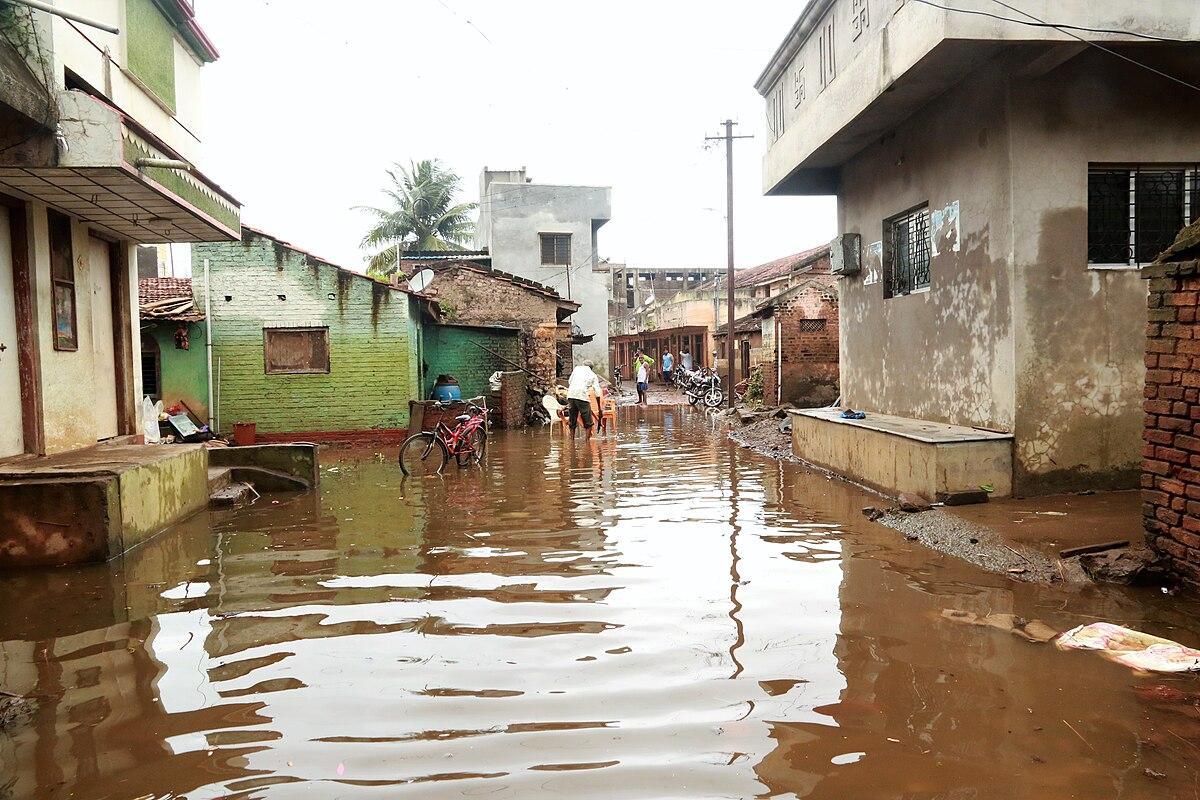
It is noted in the district Gazetteer (1969) that flooding presents significant challenges for agriculture in the Sangli district, particularly in the low-lying villages along the banks of the Krishna, Warna, and Yerala rivers. During heavy rainfall, these rivers inundate agricultural lands, leading to devastating consequences for crop production. Every year, about 32 villages from the talukas Warna, Tasgaon, and Miraj are generally affected by the floods of the Krishna River. Each year, the floods from the Warna River affect four villages in Walwa taluka, namely Aitawad Khurd, Kanegaon, Koregaon, and Shigaon, as well as three villages in Miraj taluka: Sawalwadi, Dudhgaon, and Samdoli. The Yerala River flows through Khanapur and Tasgaon talukas, causing flooding damage to the villages of Vasagade and Brahmanal in Tasgaon taluka.
According to an article by Apsara Aga (2019), unprecedented rainfall caused significant loss of lives and livelihoods in cities and towns such as Kolhapur, Sangli, and Karad. Government estimates indicate that around 96,000 hectares of agricultural land were affected by the flooding in the districts of Sangli and Kolhapur, resulting in an estimated potential loss of 700 crore. For example, this flood damaged the sugarcane crop of 1 lakh hectares, causing a loss of more than Rs. 2200 crores to the farmers of Sangli, Satara, and Kolhapur.
Drought
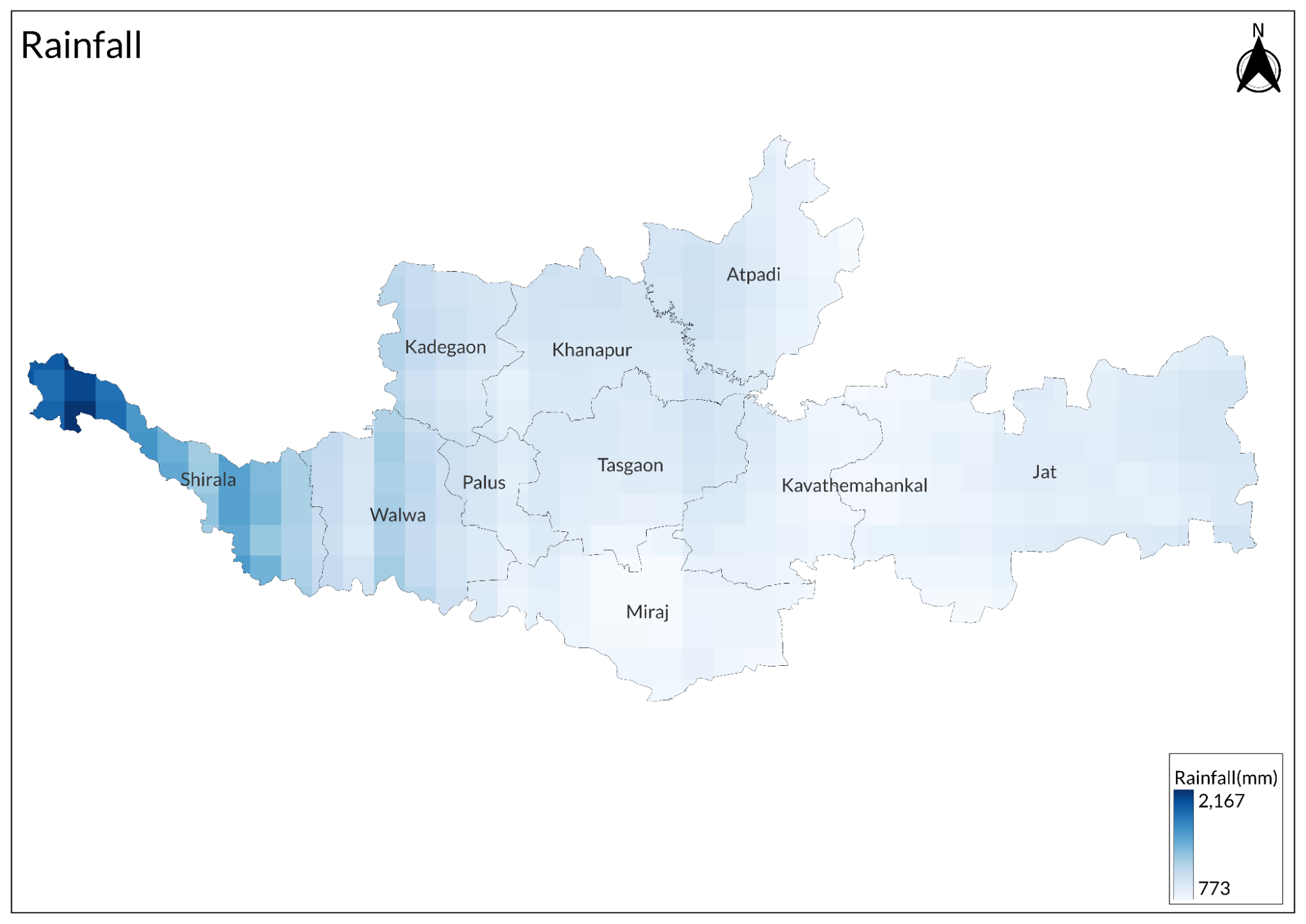
An article by Chinimandi talks about the water scarcity in Sangli, Maharashtra, which has become a critical issue affecting both residents and the agricultural sector. Several talukas, including Jat, Kavthe-Mahankal, Tasgaon Vita, Atpadi, and Khanapur, are grappling with severe water shortages due to minimal rainfall and a reliance on limited water resources. The situation has worsened following a deficient monsoon season, leaving lakes, ponds, and reservoirs nearly dry. Despite the presence of irrigation canals from the Krishna River and its tributaries like the Warna River, many areas still face an acute water crisis, with residents dependent on water tankers for drinking water.
Graphs
Irrigation
Cropping Metrics
Land Use and Credit
Sources
About Sangli. Sangli.nic.inhttps://tinyurl.com/32crm77k
ANI. 2021. Drone Spraying in Sangli Sugarcane Cultivation, a social impact entrepreneur introduces new trends in MH Agriculture.Business Standard.https://tinyurl.com/edema52
Apsara Aga. 2024.The forgotten victims of Maharashtra’s 2019 floods.Mongabay.https://tinyurl.com/vpb7c8bn
Bhosale S.S., N.K. Kale and Y.C. Sale. 2016. Trends in Area, Production and Productivity of Grapes in Maharashtra. Vol. 3, no. 10. International Journal of Advanced Multidisciplinary Research.https://ijarm.com/pdfcopy/oct2016/ijarm3.pdf
ChiniMandi Team. 2024. Water Crisis deepens in Maharashtra’s Sangli. Chinimandi.comhttps://www.chinimandi.com/water-crisis-deep…
Govt. Of Maharashtra. 1969. District Gazetteers, Sangli District. Gazetteers Dept. Mumbai
ICAR. 2017. Maharashtea Agriculture Contingency Plan for District: Sangli. ICAR - CRIDA - NICRA.https://agriwelfare.gov.in/sites/default/fil…
Maharashtra State Agricultural Marketing boardhttps://www.msamb.com/Home/Index
N.S Ambardekar and A.S Kulkarni. 1992. A profile of the co-operative sugar factories in the Sangli district from the point of view of implementation of co-operative principles therein. Shivaji University, Kolhapur.http://ir.unishivaji.ac.in/bitstream/1234567…
NABARD. 2023-24. Potential Linked Credit Plan: Sangli. Maharashtra Regional Office, Pune.
Nithyashree. PM formalisation of Micro food processing Enterprises scheme - Market Trends Turmeric processing (E-newsletter). Division of Agricultural Economics, ICAR-Indian Agricultural Research. Institute.https://pmfme.mofpi.gov.in/pmfme/newsletters…
Purva Chitnis. 2022. Why some farmers in Maharashtra’s drought-prone Sangli are taking a chance on dragon fruit. The Print.https://theprint.in/agriculture/why-some-far…
Surendra P Gangan. 2019. Floods destroy sugarcane crop on 1 lakh hectares in 3 Maharashtra districts. Hindustan Times.https://www.hindustantimes.com/mumbai-news/f…
Last updated on 6 November 2025. Help us improve the information on this page by clicking on suggest edits or writing to us.